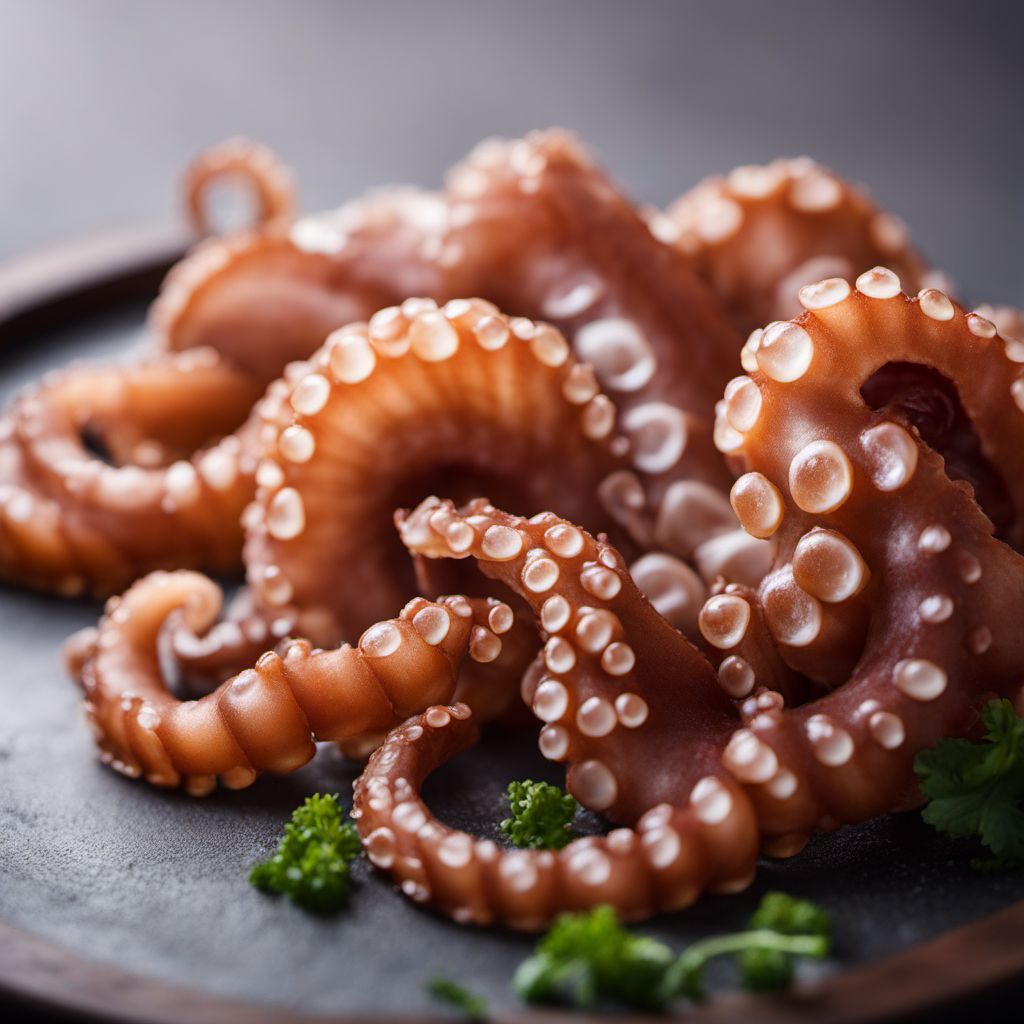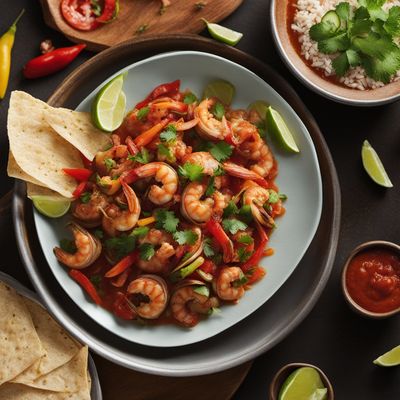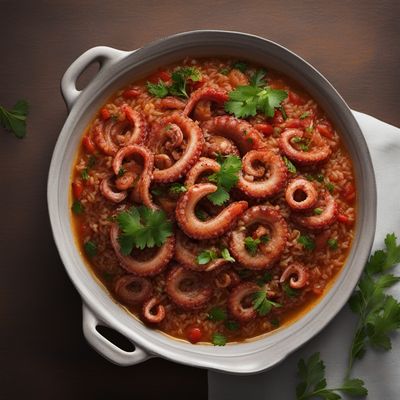
Ingredient
Octopus, curled
Tender Curled Octopus
The curled octopus is a prized seafood delicacy known for its tender texture and distinctive flavor. With its curled tentacles and unique appearance, this cephalopod adds a touch of elegance to any seafood dish. Whether it's grilled, braised, or incorporated into a seafood stew, the curled octopus offers a delightful culinary experience for seafood enthusiasts.
Origins and history
Octopus has been consumed as a food source for centuries, with evidence of its consumption dating back to ancient civilizations such as the Greeks and Romans. The curled octopus, in particular, is commonly found in the Mediterranean Sea and is highly regarded in Mediterranean cuisine. Today, it is enjoyed in various coastal regions around the world, where it is prepared using different cooking techniques and incorporated into traditional dishes.
Nutritional information
The curled octopus is a good source of lean protein, vitamins, and minerals. It is low in fat and calories, making it a nutritious choice for seafood lovers. Octopus is also known for its high content of taurine, an amino acid that supports cardiovascular health.
Allergens
Octopus may pose allergenic risks to individuals with seafood allergies. It is important to exercise caution and avoid consumption if allergic reactions occur.
How to select
When selecting curled octopus, look for specimens with bright and clear eyes, intact skin, and a fresh, mild aroma. The tentacles should be firm and pliable, without any signs of sliminess or discoloration. If purchasing pre-packaged curled octopus, check the expiration date and ensure proper storage conditions.
Storage recommendations
To maintain the freshness and quality of curled octopus, it is recommended to store it in the refrigerator at a temperature below 40°F (4°C). If the octopus is cooked, it should be consumed within 2-3 days. If it is raw, it is best to consume it within 1-2 days. To extend its shelf life, the curled octopus can be frozen, tightly wrapped in plastic or placed in an airtight container, for up to 3 months.
How to produce
Producing curled octopus requires specialized equipment and knowledge of seafood handling. It is best to leave the production to professional fishermen and seafood suppliers who can ensure the highest quality and sustainability. However, for those interested in learning about octopus fishing or aquaculture, there are educational resources available to provide insights into the process.
Preparation tips
When preparing curled octopus, it is important to tenderize the meat to achieve a more desirable texture. This can be done by either boiling the octopus with a cork or pounding it with a mallet. After tenderizing, the curled octopus can be grilled, braised, or incorporated into various seafood dishes, such as paella or pasta. Pairing it with citrus, garlic, or herbs can enhance its natural flavors.
Culinary uses
Curled octopus is commonly used in Mediterranean cuisine, where it is featured in dishes such as octopus salad, octopus carpaccio, and grilled octopus with lemon and herbs. It is also a popular ingredient in Japanese cuisine, where it is enjoyed as sashimi or in takoyaki, a savory octopus-filled snack. Additionally, curled octopus can be incorporated into seafood stews, risottos, or pasta dishes to add a unique touch.
Availability
Curled octopus is commonly available in coastal regions around the world, particularly in the Mediterranean Sea, Japan, Spain, Portugal, and Greece. It is often found in local fish markets or specialty seafood stores.
More ingredients from this category
Recipes using Octopus, curled » Browse all

Croatian-style Tapas
Adriatic Bites: Croatian-inspired Tapas Delight

Crispy Octopus Bites
Golden Octopus Delight: Crispy Bites with an Asian Twist

Galician-style Octopus with Paprika
Tender Octopus Delight: Galician Paprika Infusion

Mexican Seafood Cocktail
Mariscada Fiesta: A Refreshing Mexican Seafood Delight

Portuguese Octopus Rice
Savory Delight: Portuguese Octopus Rice

Anhui-style Almond Octopus
Silky Octopus Delight with Anhui Flair

Argentinian-style Ceviche
Tangy and Fresh Argentinian Ceviche: A Zesty Delight from the Pampas

Spicy Stir-Fried Octopus
Fiery Octopus Delight

Peruvian Octopus with Olive Sauce
Oceanic Delight: Peruvian Octopus in a Tangy Olive Sauce

Curaçaoan-style Octopus with Olive Sauce
Tropical Twist: Octopus Delight with Curaçaoan Olive Sauce

Grilled Octopus Salad
Savor the Sea: Grilled Octopus Salad with a French Twist

Grilled Octopus Adobo
Smoky and Tangy Grilled Octopus Adobo
